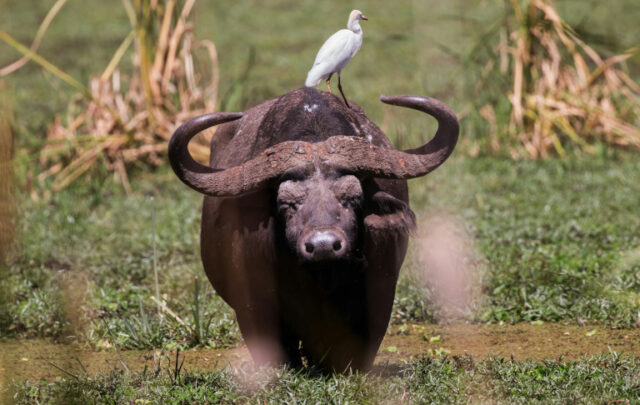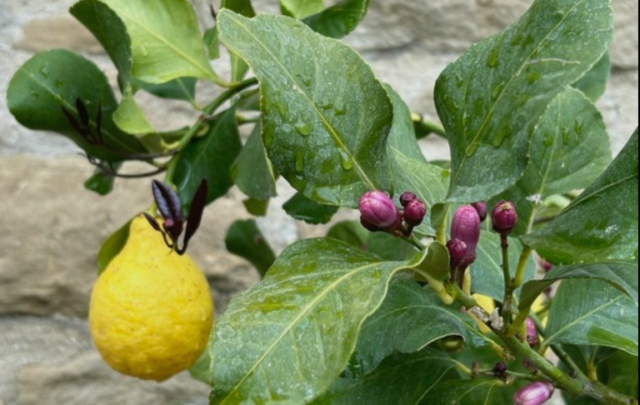NOTE: Images in this archived article have been removed.
Do climate change adaptation programs just shift climate vulnerability?
WHO: Aaron Atteridge and Elise Remling, Stockholm Environment Institute, Stockholm, Sweden
WHAT: Looking at the example of Colombian coffee growers to see if climate change adaptation projects shift vulnerability instead of fixing it.
WHEN: December 2013
WHERE: The Stockholm Environment Institute
website
I love coffee and one of the things that really terrify me about climate change (other than the devastating droughts, diseases, storms, and lack of food) is that I might be forced to give up my daily caffeine habit. So naturally, I was interested to find out whether programs that were trying to promote adaptation in the coffee industry in Colombia (home of the worlds best quality Arabica beans) were hindering more than they were helping.

Coffee – we love it (photos: Amy Huva)
These researchers set out to look at the unintended consequences of adaptation – are we fixing the problem, or just making it someone else’s problem?
First, they needed to work out what could be vulnerable to change (not just climate change). The increasing globalisation of the world means that your coffee farm is no longer your own little island – it is affected by global prices, supply chains, and the connections between the people involved in all of those activities.
The researchers narrowed it down to five different categories:
- Natural capital (aka the ecosystem services you get from trees purifying your air, water feeding your soil etc.)
- Physical capital (how many coffee plants do you own? How many tractors does that require?)
- Social capital (strong family ties and community ties in the farming industry)
- Financial capital (how easy is it for the farmer to access capital to expand/improve their business?)
- Human capital (how educated is the farmer? How many local educated workers are nearby she can employ?)
From those categories, the researchers made a case study from interviews conducted with people in the coffee industry in Colombia in 2012. They interviewed farmers, buyers, representatives from the National Coffee Federation (Federación Nacional de Cafeteros), people at the national coffee research institute, federal and local government representatives as well as coffee pickers employed in the industry.
Aside from the fact that Colombia having a national institute dedicated to studying coffee being the most exciting thing I’ve heard all week (can I go visit? How do I donate to fund their research? Can I be a coffee scientist too?), the Colombian coffee industry is surprisingly large.
Coffee has been grown in Colombia for around 200 years and is still overwhelmingly run by small landholders, with 96% of farms being 1.6 hectares or smaller. The National Coffee Federation not only represents over 500,000 farmers, but they have a national fund set up similar to Norway’s oil royalty future fund which uses profits from the coffee industry to benefit Colombians. Around 4 million people in Colombia make a living from the coffee industry, and between 1964-2012 there were also 170 different international development projects hosted there.
I knew my coffee habit was a good thing!

Coffee science/tastings (photo: Amy Huva)
From their interviews, the researchers worked out that the sources of vulnerability in the industry were pretty much the same as any other industry – price and price volatility, access to markets, access to finance, harvest and yield changes, production costs and knowledge of alternative/more efficient practices.
This means that many of the pressures Colombian coffee farmers are facing are exactly the same problems many other industries are facing like changes in market preference (organic coffee production possibly outstripping demand), or international development aid being used on things that are not a priority for the farmers. This led the researchers to conclude that unexpected flow-on effects are pretty much the norm, not the exception to the rule.
The difference for coffee growers in Colombia is the direct effect climate change will have on them as the prime coffee growing conditions move to higher latitudes where the soil is not as fertile.
The key risk for adaptation programs looking at climate change is that farmers in areas that are now marginal for growing coffee will get ignored or abandoned, when they’re the ones that really need the help to either diversify their crops or find new livelihoods as climate change really bites.
So the moral of the story seems to be that while climate change is going to affect the way we all do things, if we’re going to try and help with adaptation, we can’t forget the marginal growers.






